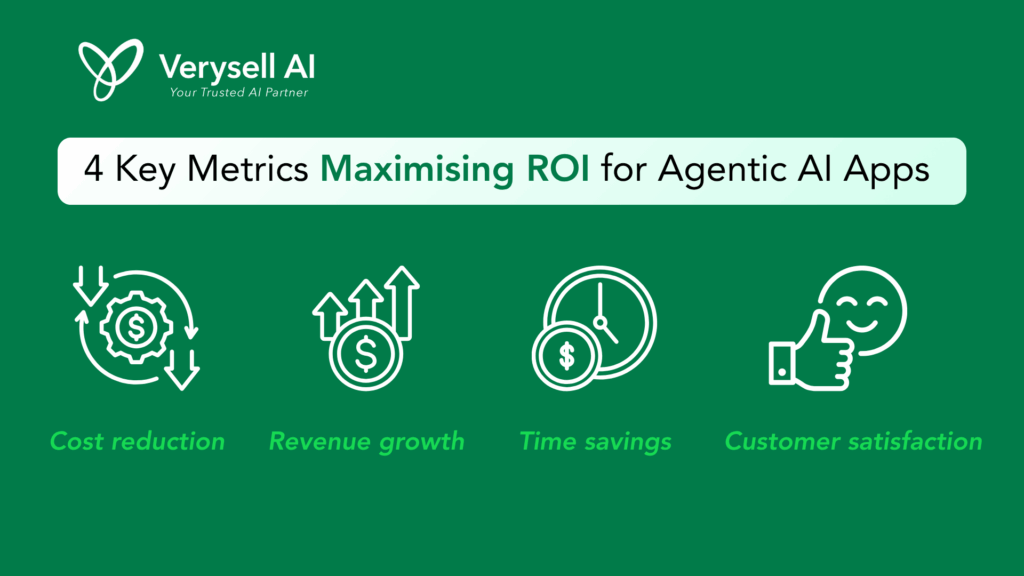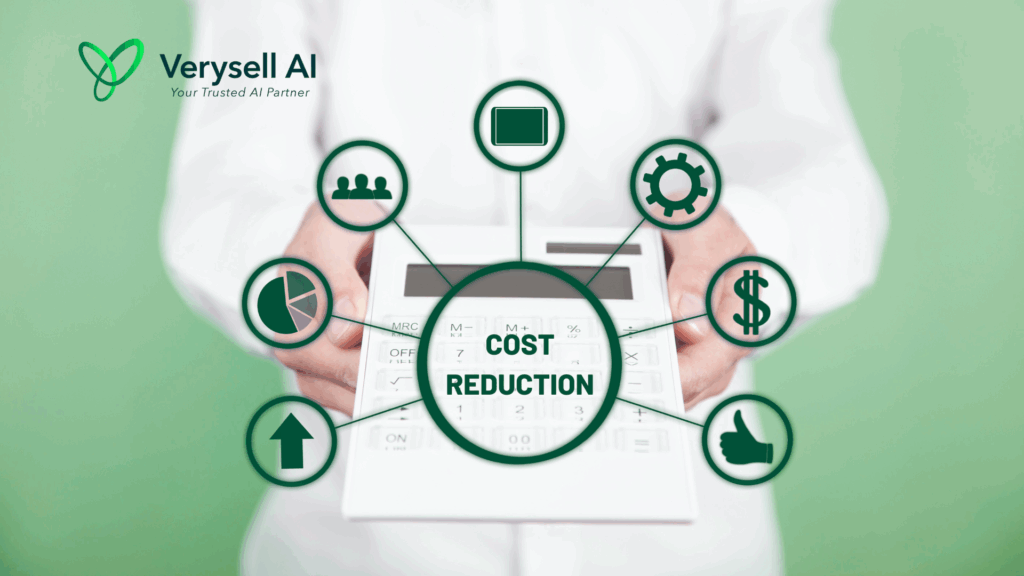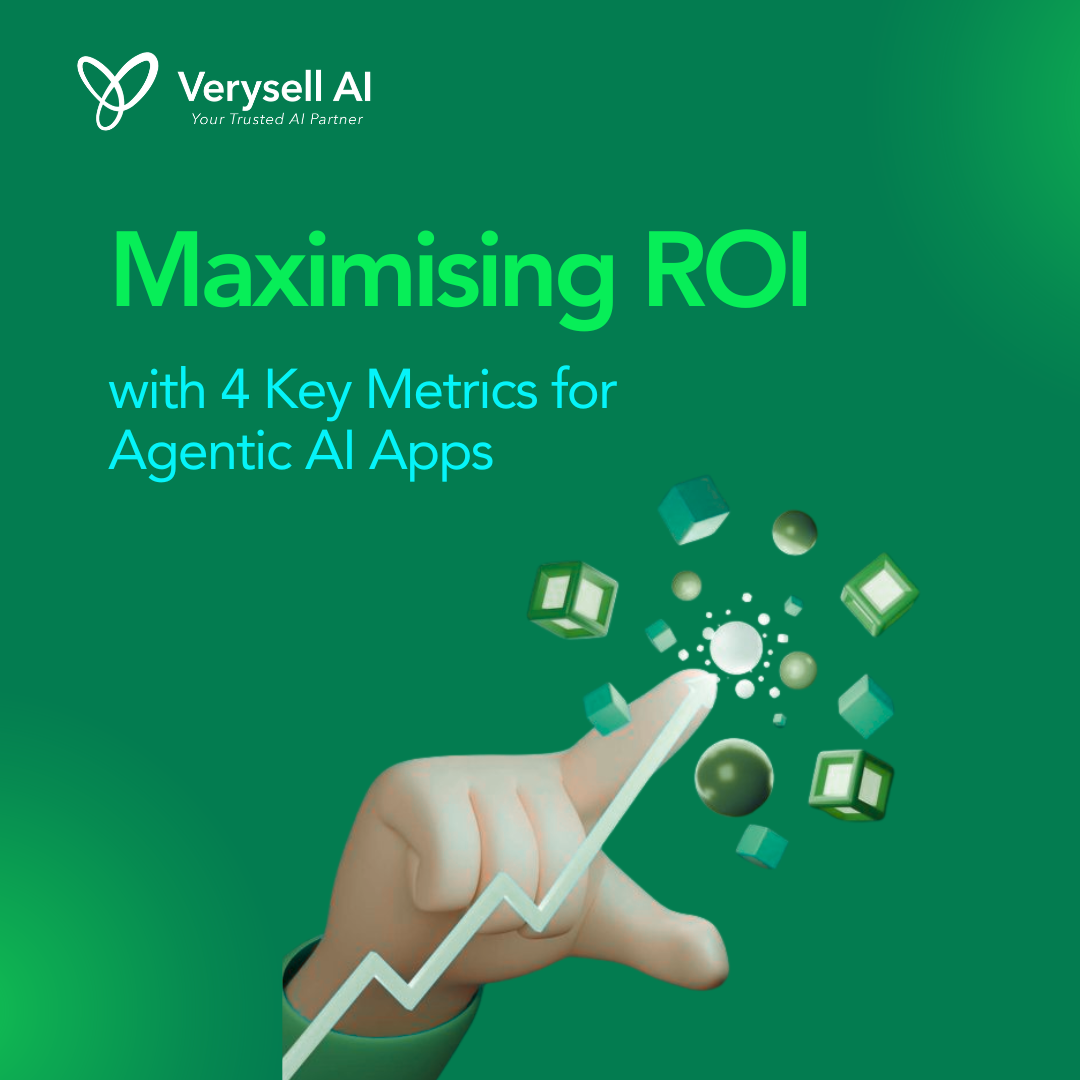ROI of AI applications is becoming paramount when businesses adopt Artificial Intelligence (AI). Particularly, Agentic AI leverages autonomous decision-making capabilities in various industries. However, accurately calculating the ROI of such advanced AI solutions remains a challenge for many organizations. To help navigate this complexity, it is crucial to understand which metrics and methods should be employed to assess the financial and operational impact of Agentic AI.

In this blog post, we will explore four key metrics that should be tracked when calculating ROI for Agentic AI applications. We will break down each metric, provide actionable insights, and explore how businesses can maximize the benefits of their AI investments.
What is ROI?
A financial ratio called return on investment (ROI) calculates how much money an investment makes in relation to how much it costs (Fernando, 2025). The original investment amount, continuing maintenance expenses, and the investment’s cash flow are important determinants of return on investment.
1. Cost Reduction
The primary ability of Agentic AI to significantly lower operating expenses is its main selling point. AI can optimise resource allocation, automate decision-making, and expedite processes, all of which lead to quantifiable cost reductions. According to Hartley (2019), because IT infrastructures become increasingly complex, traditional methods of managing operations are proving insufficient. The integration of AI and automation offers solutions by enabling intelligent automation of routine tasks, predictive analysis for maintenance and troubleshooting, and optimized resource allocation. The formula for cost reduction can be expressed as: Cost reduction = Pre-AI operation cost – Post-AI operational cost
>> Read more about AI customer support to reduce cost per ticket case study!

To assess cost reduction, AI has supplanted manual or less efficient processes at the beginning of pinpointing areas (Onwubuariri et al., 2024). This includes evaluating labor costs, specifically the number of employees whose tasks are automated by AI. Additionally, consider operational inefficiencies, which reflect the time and resources saved through AI-driven automation. Finally, analyze resource utilization, focusing on the optimization of inventory, scheduling, or production processes to gauge overall efficiency improvements.
2. Revenue Growth
By facilitating new business models, boosting decisions, and increasing customer experiences, AI may also increase revenue. Increased sales may result from the use of agentic AI technologies to optimise pricing strategies, personalise offerings, and assist companies in expanding into new markets.

In addition to improving customer experiences, AI empowers businesses to make better-informed decisions and explore new business models. By leveraging advanced analytics, AI can identify market trends and consumer behavior patterns that might otherwise go unnoticed (Robert, 2024). This insight allows companies to optimize pricing strategies and enhance product offerings, ensuring they remain competitive in a rapidly evolving market. The formula for cost reduction can be expressed as: Revenue growth = Post-AI revenue – Pre-AI revenue.
Furthermore, AI can facilitate market entry by identifying viable opportunities and assessing potential risks, enabling businesses to expand into new sectors with confidence (SmartDev, 2025). Overall, these capabilities not only drive immediate revenue growth but also lay the groundwork for long-term sustainability and success.
3. Time Savings
Incorporating AI into business can lead to a reduction in the time spent on each task assigned to employees. For instance, automating data entry eliminates the tedious manual input process, allowing employees to focus on more strategic tasks. Similarly, AI-driven customer support systems can handle routine inquiries through chatbots, providing instant responses and freeing up human agents for complex queries. In inventory management, AI can predict stock levels and automate reordering processes, ensuring optimal inventory without overstocking or stockouts. This streamlined approach helps organizations enhance productivity while minimizing human errors (SmartDev, 2024).
You can read more about our case study deeply understanding of how AI chatbot decreases average response time. By handling repetitive tasks effectively, AI not only accelerates processes but also enhances overall productivity.

Employees who previously dedicated hours to these mundane tasks can now redirect their efforts toward more strategic initiatives that require critical thinking and creativity. This transformation not only enhances individual job satisfaction but also drives organisational innovation (Leys, 2024).
>> Read more to know top 10 benefits and use cases of AI in manufacturing
This shift in focus can lead to a more innovative workplace environment, where employees are encouraged to engage in problem-solving, brainstorming, and collaboration. As they have more time to explore new ideas and develop creative solutions, businesses can benefit from fresh perspectives and innovative approaches that drive growth and competitive advantage. Ultimately, the integration of AI not only optimizes operational efficiency but also fosters a culture of innovation and employee engagement (Culture Monkey, 2025).
4. Customer Satisfaction
Customer experience is a critical driver of long-term business success and Agentic AI can improve satisfaction by providing faster, more accurate, and personalise service. By automating responses, personalising communications, and analysing customer behaviour, businesses can significantly enhance customer engagement and loyalty.

To quantify the impact of AI on customer satisfaction and retention, businesses should track customer satisfaction (CSAT) scores (Renascence, 2024). CSAT is determined by asking clients to rank their experience on a scale, usually from 1 to 5 (or 1 to 10), where higher ratings indicate more pleasure. The formula of CSAT is simple: Number of satisfied customers divide the total number of survey responses, then multiply 100 (Gabe, 2024). Additionally, you can correlate AI-driven enhancements (e.g., chatbots, personalized marketing) to improvements in these metrics.
Maximising ROI from Agentic AI applications requires a comprehensive understanding of key metrics that reflect their impact on business operations. By focusing on cost reduction, revenue growth, time savings, and customer satisfaction, organizations can effectively measure the benefits of their AI investments.
Each metric not only highlights the financial and operational efficiencies gained but also underscores the strategic value of AI in fostering innovation and enhancing customer experiences. As businesses continue to integrate AI into their processes, leveraging these metrics will be essential for driving sustainable growth and maintaining a competitive edge in the evolving market landscape. Contact us to bespoke our AI solution from now!


